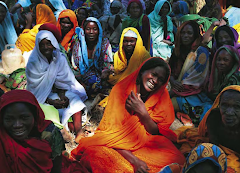Life & Watchitoo Update:
It has been an ridiculously long time since i have posted a new update about exciting critical voices in social activism or new happenings in my life. the reason being, even if it isn't a good one, is that i have been swamped with the transition of the Watchitoo public launch as we came out of private beta on july 20th- and my blogging has been consumed by managing and launching the Watchitoo Blogs: blog.watchitoo.com and the initial beta blogspot BLOG at http://watchitoo.blogspot.com/ and our twitter accounts. (you can follow @watchitoo, @watchitooteam, and my personal account@hilaraz)
In addition, I moved out of NYU-ville (AKA my east village hood around 6th and 1st ave) to the new post-grad mecca: Kipps Bay-Murray hill and i've been adapting to the new neighborhood alongside the full-time working life (which has become rather routine at this point).
A lot of new exciting tech developments with real-time trends, content sharing solutions, VOD online, and personal broadcasting which has become rather common through livestreaming- has made the innovative web 2.0 sphere a dynamic environment to be part of.
The explosion of twitter in the news/pop culture in the past few months, alongside significant changes in facebook's functionality and platform (changing status updates, buying friendster, offering twitter like tagging, and huffington post connect), the huge pick-up of UStream, has really driven home the message youtube pioneered of individuals being their own social media creators and drivers of real-time content consumption. journalism isn't a hierarchical walled profession anymore often bloggers/tweets are reporting breaking worldwide news before key reporters cover it or even generating content that gets picked up by the masses themselves. The Iran elecitions proved how social media can be leveraged to spread news and network like never before- facebook and twitter gave voice to a people who were silenced by their government but embraced by a world online- in a world where global collaboration is necessary.
through the realms of technology, civil society has opened its eyes and slowly started to recognize global issues/concerns making use of platforms & tools which can service social activism initiatives and empower individuals. After hearing Dan Bricklin recently speak at the NY Tech Mt-Up i am certain there is little to be known about where the impact of technology will take us. There's no way to no for certain what lies in the future, but future technology will certainly surpass all expectations, as the creation of computers, the introduction of the WWB, social media revolution, and his small creation of the VisiCalc what we now know as the excell spreadsheet, have proven thus far.
Cheers to emily dickensons words of wisdom: "dwell in possibility"
I am awaiting to see what lies in the tech road ahead.

















 concerning the definition of the term refugee and the principle of
concerning the definition of the term refugee and the principle of 






